Syn.: Alnus glutinosa var. virescens (S. Watson) Kuntze, Alnus incana var. occidentalis (Dippel) Hitche, Alnus incana var. virescens S. Watson, Alnus occidentalis Dippel, Alnus rugosa var. occidentalis (Dippel) C. L. Hitchc., Alnus tenuifolia Nutt., Alnus tenuifolia var. occidentalis (Dippel) Callier, Alnus tenuifolia var. virescens (S. Watson) Callier
Family: Betulaceae S. F. Gray
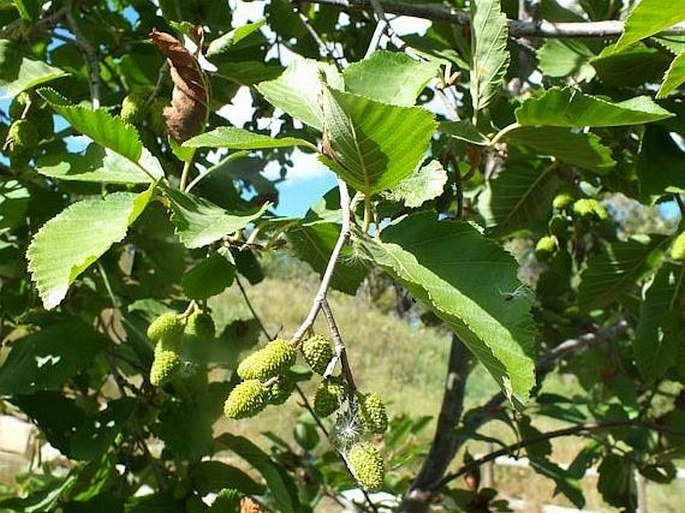
Distribution: Species A. incana grows in North America in 2 subspecies: A. incana subsp. rugosa, occuring in northeast US and southeast of Canada, this subsp. tenuifolia is found in mountainous areas of the west of North America, from Alaska through British Columbia and Alberta to northern California and eastward from western Colorado to north of New Mexico.
Ecology: Grows on banks of rivers and lakes, on edges of wet meadows and fields at elevation 100 to 3000 m. Blooms at the beginning of spring.
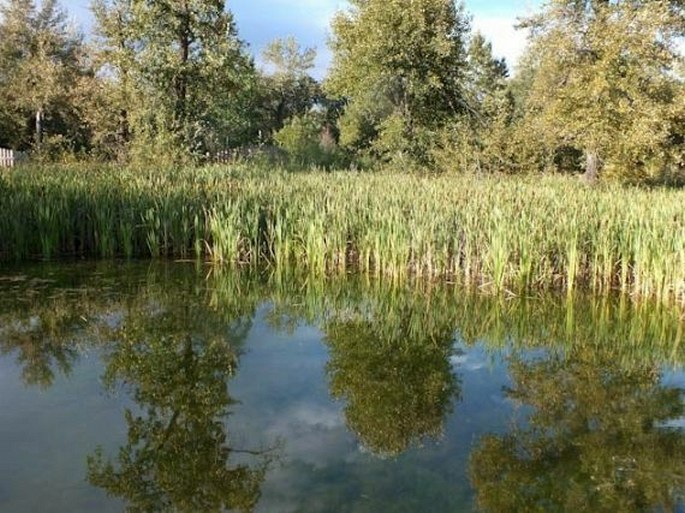
Description: A shrub or a small tree up to 12 m tall with bark which is light grey to dark brown. Leaves are alternate, with petioles, narrowly ovoid to ellipsoid, 4–10 × 2.5–8 cm, wavy-lobed, double-toothed, dull green. Separate sexes, male catkins and female seed cones. The seed cones appear before the leaves in spring, on twigs from the previous year. They are ovoid, 10–20 mm long, 8–13 mm wide. The catkins appear in the fall for the next growing season. They are 4–10 cm long.
Usage: Native people used this alder for traditional medicine. Alder bark tea for treating haemorrhoids. The wood was used as fuel for smoking fish, meat and hides. Also red dye from the twigs and inner bark.
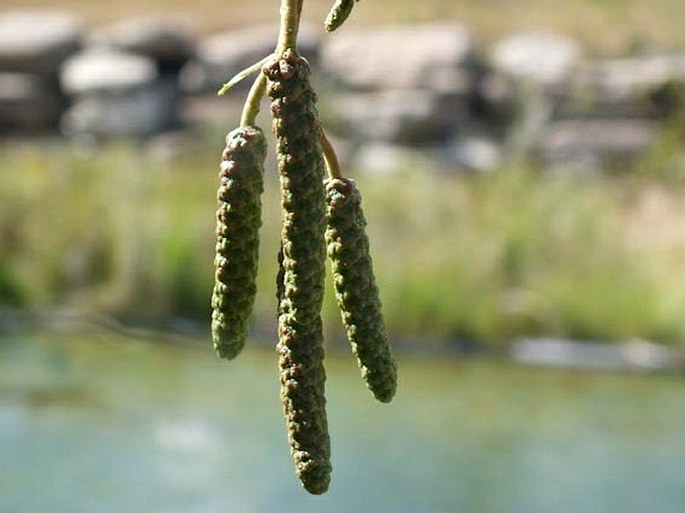
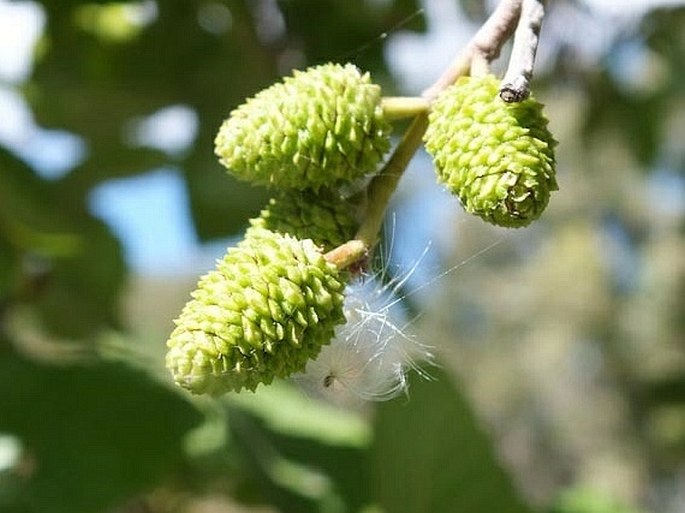
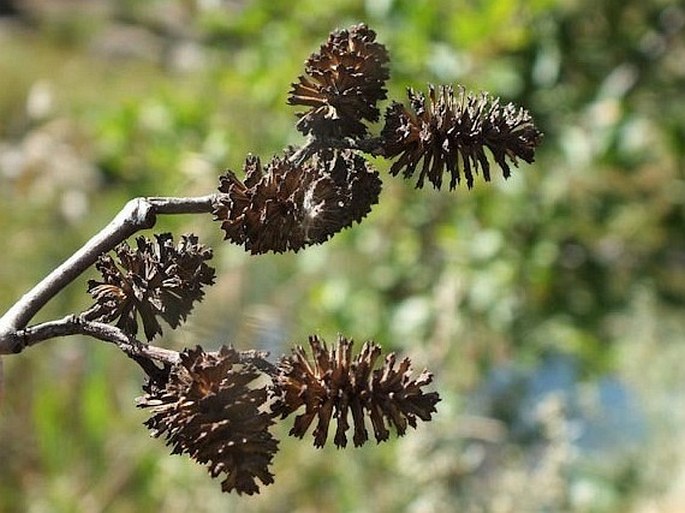
These images were taken in Canada, Alberta, Calgary, Pearce Estate Park (August 26, 2013).


